Treatment with the help of the patient’s own information
in the BICOM® mobile VET bioresonance device
In contrast to other “frequency therapy devices”, BICOM® bioresonance is a method that is highly individual and perfectly tailored to the needs of the patient through the use of the patient’s own information and the possibility of testing specific wave patterns for resonance.
The patient’s own pathological and physiological information is recorded using special applicators and fed into the BICOM® mobile VET.
Depending on the therapy program, the specific wave pattern as a carrier of information is amplified, weakened or inverted and transmitted back to the patient in modulated form, which means that the transmission of information changes in clarity depending on the modulation or it disappears completely.
The treatment signals continuously adapt to the changing pathological situation of the patient. As the therapy progresses, the body’s ability to regulate is reactivated.
Find out more about this topic at our regular events. Together with veterinarians and animal naturopaths, we offer various face-to-face and online events .
The BICOM® bioresonance method is a cause-oriented, holistic treatment concept. It can narrow down the cause of the health problem in animals and find out even the hidden causes of the clinical picture.
Animals have a natural regulatory system that can also compensate for unusual influences. However, even good self-healing powers eventually reach their limits. Persistent exposure to allergens, environmental toxins, fungi, viruses, bacteria or stress and changed living conditions weaken the immune system and are often the cause of an illness. In particular, fungal infestation on the skin or chronic diseases in general are not always due to a breeding-related genetic defect, but are signs of a disturbed immune system.
The BICOM® bioresonance method is the key to successful diagnosis and therapy, especially for animals that cannot tell us exactly where it hurts or what the symptoms are. It is a gentle form of therapy that can be carried out without side effects and without additional stress for the animal.
The BICOM® mobile VET records the bioenergetic state of the animal, processes the information it contains and returns modified vibrations / therapy frequency patterns to the animal. Symptoms and stress can be diagnosed and targeted therapy can be initiated.
Through the use of endogenous and exogenous substances, the body’s own self-healing powers can be activated and imbalances that have existed for a long time can also be regulated.
REGUMED Medizintechnik are pioneers of the BICOM® bioresonance method. More than 30,000 therapists worldwide, well over 10,000 of them in Germany, successfully use their therapy concept.
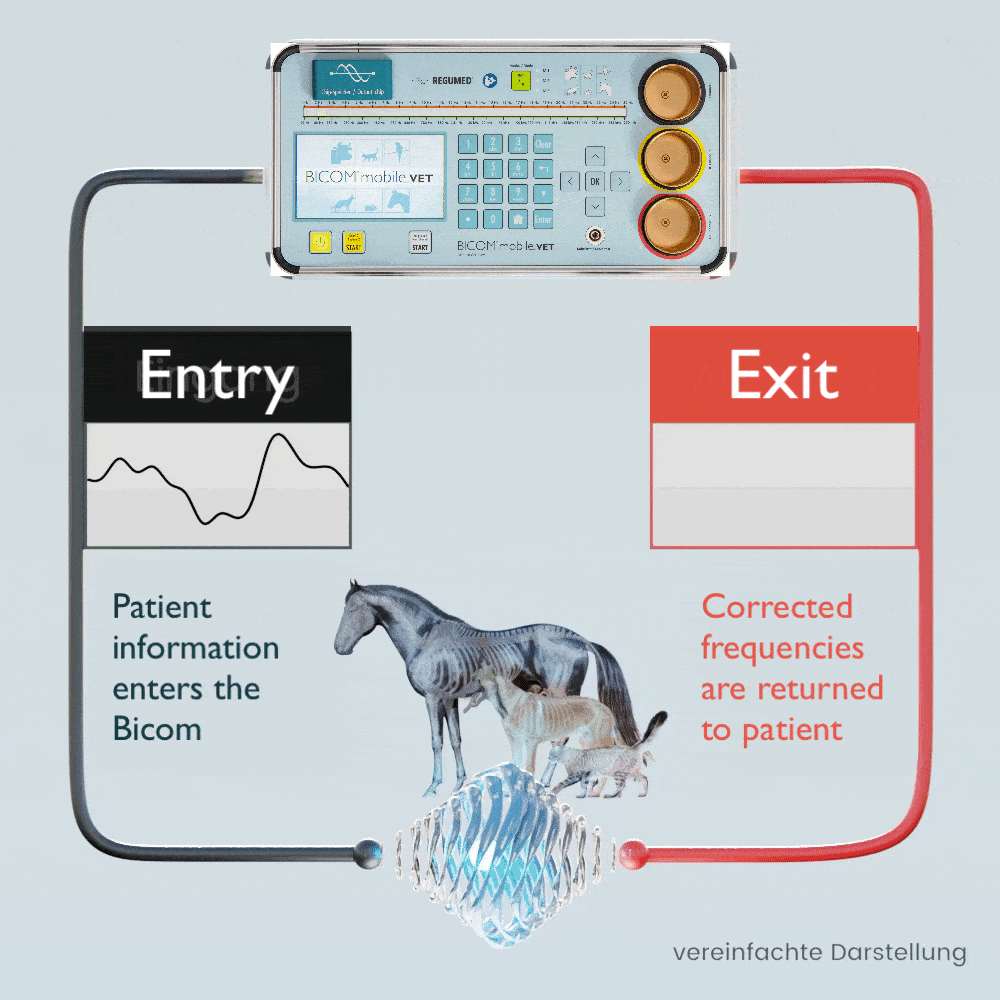
Biophysical basics of the bioresonance method
Life is only possible when three conditions are met: matter, energy and information.
We also find these aspects in conventional medicine, both in diagnostics and in therapy. For example, every drug is also a carrier of information.
Information is neither energy nor matter, it is immaterial and comparable to the meaning of a message from a sending to a receiving system.
In addition to the electrical processes in the receptor proteins and biomembranes in general, electromagnetic interactions through light (biophotons) also play a role in cell communication and the transmission of information.
Specific electromagnetic wave patterns act as information carriers. These wave patterns can be modulated by the BICOM® device in order to eliminate disturbing or stressful information in an organism.
The goal is to restore the free flow of healing information (cell communication) and thus support the self-regulation of the organism and the self-healing powers.
Individual, patient-specific information or information from native substances, digitized substances or information stored on storage media can be used for therapy.
What your colleagues are saying…

Expert Care for the Lymphatic System in Horses
Don’t Overlook the Lymphatic System in Horses Here's Why It Matters
When it comes to maintaining your horse’s health, digestion, hooves, and joints often steal the spotlight. But there’s one system quietly working behind the scenes that’s just as critical yet commonly ignored—the lymphatic system in horses. This essential system is responsible for moving lymph fluid, removing toxins, and preventing swelling. If it fails, your horse could end up struggling with persistent leg swelling, recurring infections, or worse.
Ignoring the lymphatic system in horses can cost you time, money, and your horse’s comfort. Especially during show season or long rides, problems such as equine oedema, lymphangitis in horses, or chronic progressive lymphoedema (CPL) can flare up rapidly. It’s not just about appearances, it’s about your horse's mobility, immune health, and long-term performance.
If you're dealing with these challenges, you’re not alone. Owners everywhere are now turning to therapies that support healthy lymphatic drainage in horses without relying heavily on medications. One standout therapy leading this shift is bioresonance, a natural, non-invasive option that’s changing the way veterinarians and horse owners care for equine lymphatic health.
Why the Lymphatic System Deserves Your Attention
The lymphatic system is like the horse’s internal drainage crew. It filters waste, regulates fluid levels, and supports the immune system. But when that drainage slows down or clogs up, here’s what you might see:
Swollen legs or puffiness after travel or exercise
Thickened skin or hardened tissue around the fetlocks
Recurring skin infections and low-grade fevers
Sluggish recovery from illness or injury
These aren’t just minor annoyances. They’re red flags that the lymphatic system in horses may not be keeping up. And if not addressed early, these symptoms can spiral into long-term problems like chronic progressive lymphoedema (CPL) or recurring lymphangitis in horses, both of which can be painful, frustrating, and even career-ending for performance horses.
How Poor Drainage Affects Your Horse's Life
When lymph flow slows down, fluid begins to pool, especially in the lower limbs. This condition is known as equine oedema, and while it may appear as slight swelling at first, it can quickly progress.
Poor drainage not only causes swelling but can also trap toxins in the tissue. That environment becomes a breeding ground for bacteria, leading to lymphangitis in horses, a painful and often urgent medical issue characterised by heat, swelling, and lameness. Horses with CPL often show thickened skin folds, persistent dermatitis, and loss of mobility.
Even basic grooming or booting becomes a challenge when legs are puffy and sore. And the emotional toll on both horse and rider? Enormous. That’s why forward-thinking horse owners are looking for ways to prevent the build-up before it becomes an emergency.
Bioresonance Therapy: A Modern Ally for Lymphatic Support
Imagine helping your horse flush out toxins, ease swelling, and rebalance its body, without the need for drugs, surgery, or side effects. That’s the promise of bioresonance therapy.
At bioresonance. Veterinarians use the BICOM bioresonance device to identify imbalances in your horse’s body and gently nudge it back toward harmony using electromagnetic frequencies. It’s non-invasive, completely pain-free, and safe for regular sessions.
The therapy can support:
Healthy lymphatic flow and improved horse lymph drainage
Faster recovery after travel, training, or illness
Relief from chronic issues like CPL and lymphangitis in horses
Natural detoxification, especially after antibiotics or chemical treatments
What’s exciting is that bioresonance doesn’t replace your vet’s care—it enhances it. Many owners use it in conjunction with traditional treatment plans to accelerate healing and minimise the need for repeat medications.
Real-World Results: What Horse Owners Are Saying
Across Europe and now in the UK, bioresonance is gaining trust in barns, vet clinics, and competition circles. Horse owners who once struggled to manage equine oedema are now seeing visible reductions in swelling within a few sessions.
One rider shared how her warmblood suffered from frequent episodes of lymphangitis in horses after long hauls. Since starting regular bioresonance therapy, flare-ups have stopped, and she’s riding at full capacity again.
Another testimonial came from a breeder dealing with chronic progressive lymphoedema in his stallion. “No matter what we tried,” he said, “nothing kept the swelling down long term, until this.” After a tailored bioresonance schedule, the stallion's legs stayed tight, clean, and comfortable, even during high humidity.
These stories aren’t isolated. Increasingly, professionals are recognising the effectiveness of bioresonance in supporting the lymphatic system in horses, particularly when combined with proper diet, exercise, and grooming protocols.
How to Support Your Horse’s Lymphatic System Naturally
If you’re ready to get serious about your horse’s long-term health, here’s how to help keep that lymphatic system flowing strong:
Regular bioresonance therapy to target imbalances and inflammation
Gentle exercise and hand-walking to encourage the movement of lymph fluid
Massage techniques or manual horse lymph drainage by a trained therapist
A clean diet free from processed feed, high sugar, and excess chemicals
Consistent turnout and access to movement (even in winter)
It’s not just about reacting to problems anymore—it’s about building resilience from the inside out. Whether your horse is prone to equine oedema, managing CPL, or recovering from lymphangitis, supporting the lymphatic system is essential.
Is Your Horse Showing Signs of Lymph Issues?
Here’s a quick checklist of symptoms horse owners often overlook that may point to poor function of the lymphatic system in horses:
Puffy or hot legs after standing
Uneven sweating or skin irritation
Increased skin sensitivity or infections
Slow-healing wounds
Frequent illness or low energy
If you recognise two or more of these signs, it’s time to act, not wait. Early support can prevent conditions like chronic progressive lymphoedema (CPL) or recurring lymphangitis in horses from becoming lifelong management issues.
Why BioResonance.Vet Is the Right Place to Begin
At bioresonance.vet, we specialise in bringing the best of bioresonance technology directly to equine practitioners. Our team understands the complexity of the lymphatic system in horses and offers personalised therapy sessions that address your horse’s individual needs.
Whether you’re seeking help with horse lymph drainage, prevention of equine oedema, or relief from CPL, we have the experience, tools, and care your horse deserves.
Browse our latest resources, check out success stories on our blog, and book a session to see the difference for yourself. Because when your horse feels good, everything changes, from performance to personality.
FAQs
1. What causes equine oedema in horses?
Equine oedema is often caused by poor lymph flow, inactivity, or infections. It leads to fluid build-up in the limbs.
2. How does bioresonance therapy help horses?
It utilises electromagnetic signals to detect and correct bodily imbalances, thereby supporting healing and detoxification.
3. Can CPL be cured?
CPL cannot be fully cured, but it can be managed. Bioresonance can ease symptoms and reduce flare-ups.
4. Is lymphangitis in horses an emergency?
Yes. It can be excruciating and dangerous. Early support and therapy are crucial in preventing recurrences.
5. How often should a horse get lymph drainage?
Depending on the horse's condition, weekly or bi-weekly sessions may be recommended.
Conclusion
You can't afford to ignore the lymphatic system in horses any longer. From swelling and sluggish recovery to full-blown chronic conditions like CPL or lymphangitis in horses, the consequences are too severe to leave to chance. With tools like bioresonance therapy and a focus on proper lymphatic drainage in horses, you can provide your horse with lasting relief and renewed vitality.
Start today, because the sooner you support the lymphatic system in horses, the stronger, healthier, and happier they’ll be tomorrow.
Treatment Priorities
For gentle and optimal treatment of the causes of diseases in animals
The BICOM® bioresonance method is predestined for use with large and farm animals such as horses , but also with dogs , cats and small animals. The treatment focus of the BICOM® mobile VET is wide-ranging. It is now used for many indications.
It recognises health deficits at an early stage and is used, among other things, for the following symptoms:
sweet itch
Feed intolerances
allergies and related diseases
COB/COPD
leishmaniasis
Lyme disease
anaplasmosis
lameness in horses
hoof ulcer
Poisoning by poisoned baits, plants etc.
mauke
Feline infectious peritonitis (FIP)
Cat flu/cat disease
eye/conjunctivitis
and much more
Get advice now!
Our experts are happy to be there for you personally
Our BICOM® bioresonance experts are available to answer any questions you may have
and will be happy to advise you personally and individually.
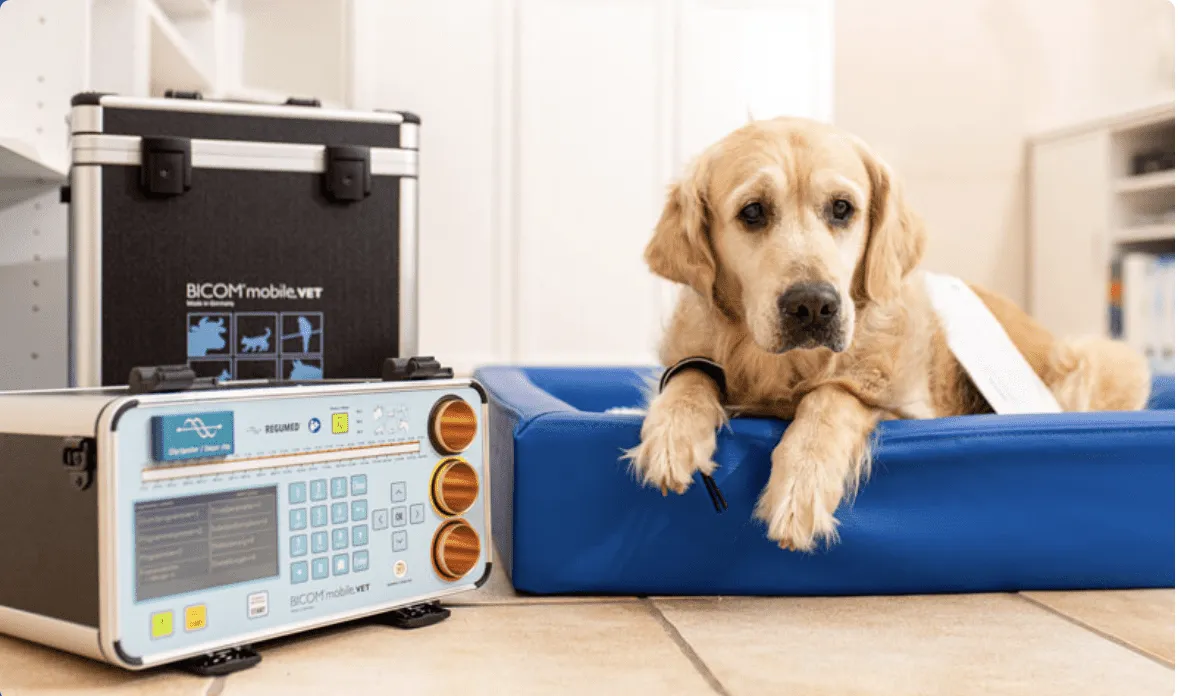
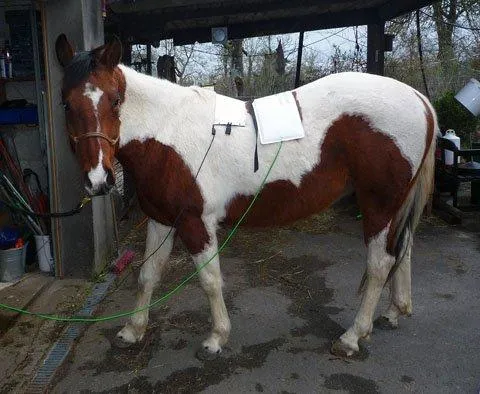

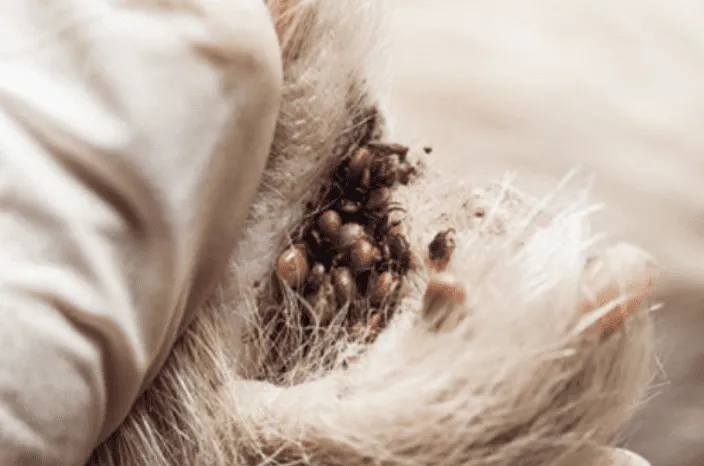
Request more information
Quick Links
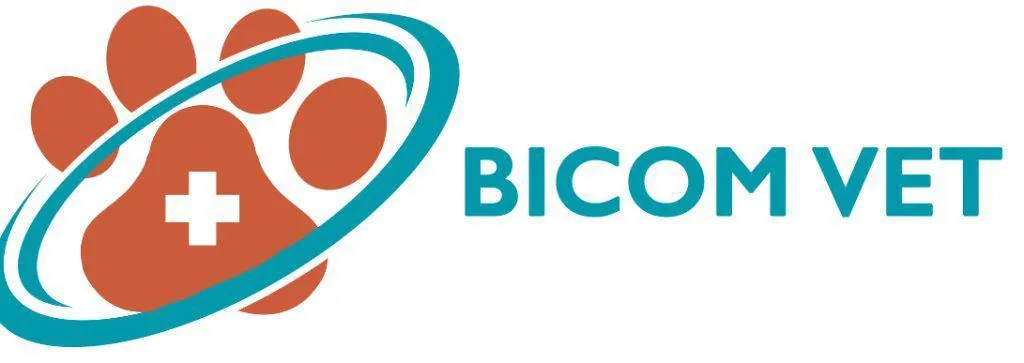

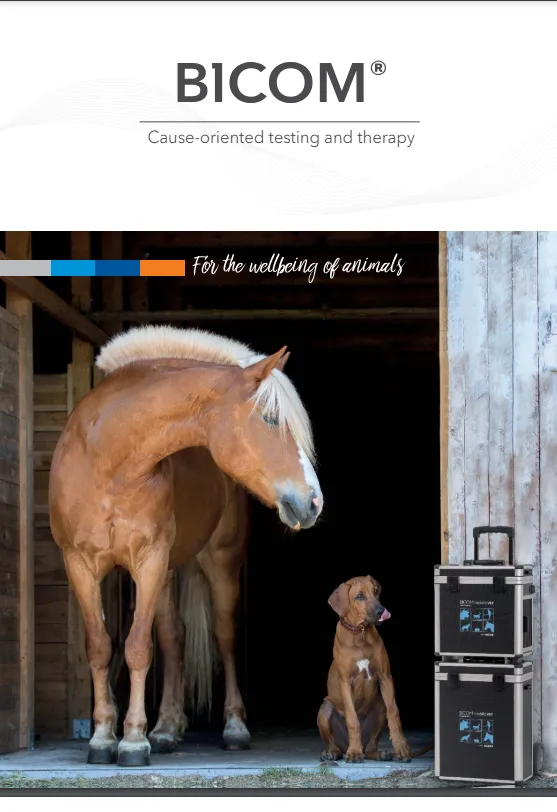


Facebook
Instagram
Mail